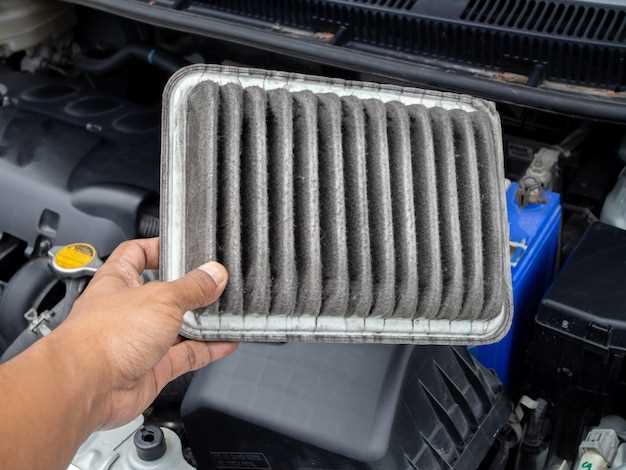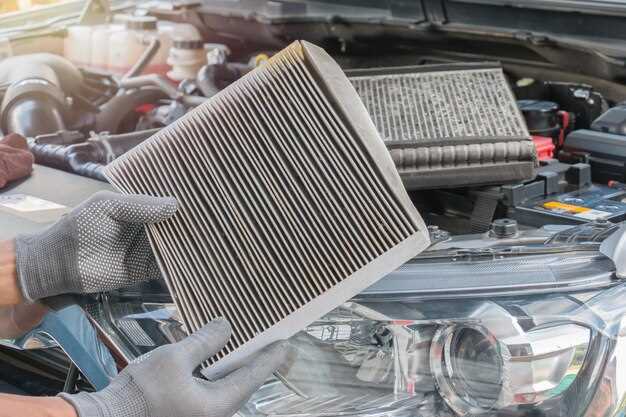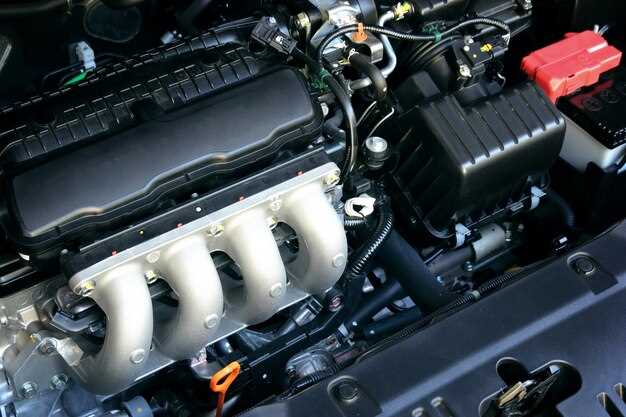
When it comes to high-performance cars, the choice of components can make or break your driving experience. One of the most crucial elements in maintaining optimal performance is the radiator. A high-quality radiator ensures that your engine remains cool under intense conditions, allowing you to push the limits without the fear of overheating.
In this article, we delve into the world of performance radiators, evaluating their features, benefits, and overall effectiveness. High-performance vehicles demand radiators that can manage increased heat output while maintaining efficiency. Choosing the right radiator can enhance your vehicle’s performance, improve engine longevity, and ultimately provide you with an exhilarating driving experience.
From core size to material composition, several factors dictate the effectiveness of a radiator. We will analyze the top contenders in the market, offering insights into their design and functionality. If you’re serious about optimizing your car’s performance, understanding the role of a suitable radiator is indispensable.
Key Features to Look for in Performance Radiators

When selecting a performance radiator, several critical features should be considered to ensure optimal cooling and efficiency. First and foremost, assess the radiator core size. A larger core often allows for better heat dissipation, leading to improved cooling performance. Additionally, the number of rows within the core can significantly impact cooling capacity; more rows typically equate to enhanced heat exchange capabilities.
Material is another crucial factor. Aluminum radiators are favored for their lightweight properties and excellent thermal conductivity compared to traditional copper-brass options. Aluminum not only aids in efficient cooling but also contributes to a reduction in overall vehicle weight, which can enhance performance.
Pay attention to the design of the radiator. A crossflow design can offer better cooling performance than a downflow design by allowing coolant to flow across the air stream rather than through it. This orientation enhances the efficiency of the heat exchange process, especially in high-performance applications.
Furthermore, consider the type of coolant and its compatibility with the radiator. Performance radiators should be designed to handle specialized coolants that can withstand higher temperatures and pressures without breaking down, ensuring long-term reliability and performance.
Lastly, analyze the mounting options and fitment of the radiator. A properly fitted radiator will maximize airflow and ensure that the cooling system operates effectively under demanding conditions. Compatibility with existing hoses and mounting brackets is essential to avoid additional modifications and ensure ease of installation.
Comparison of Material Types: Aluminum vs. Copper
When it comes to high-performance car radiators, the choice of material plays a critical role in the overall efficiency and effectiveness of the cooling system. Two of the most common materials used in radiator construction are aluminum and copper, each offering distinct advantages and disadvantages.
Aluminum is widely favored in modern high-performance applications due to its lightweight nature and exceptional thermal conductivity. Aluminum radiators are often more efficient at dissipating heat, which helps maintain optimal engine performance. Additionally, the lighter weight of aluminum contributes to vehicle dynamics and fuel efficiency. Manufacturers also appreciate that aluminum can be easily molded into complex shapes, allowing for innovative designs that enhance airflow and cooling.
However, aluminum radiators can be prone to corrosion over time, especially in environments with high humidity or salt exposure. This may necessitate careful maintenance and potentially shorter lifespans compared to other materials.
Copper, on the other hand, has been a traditional choice for performance radiators for many years. It offers excellent heat transfer properties, allowing quick and efficient cooling of the engine. The thermal conductivity of copper is superior to that of aluminum, which means copper radiators can be designed with fewer cores while still providing effective cooling performance.
Despite these advantages, copper radiators are typically heavier than their aluminum counterparts, which can affect overall vehicle weight and handling. Furthermore, copper is more expensive and can be less resistant to corrosion, particularly if not properly maintained.
In summary, the choice between aluminum and copper for high-performance car radiators ultimately hinges on specific performance needs and preferences. Aluminum provides a lightweight and efficient option suitable for modern applications, while copper offers superior heat transfer, albeit at a higher weight and cost. Understanding these differences can help enthusiasts make informed decisions when selecting a radiator that best enhances their vehicle’s performance.
Top Brands for High-Performance Car Radiators

When it comes to enhancing the cooling efficiency of high-performance vehicles, choosing the right radiator brand is crucial. Renowned manufacturers have built reputations for quality, reliability, and innovative cooling solutions. Here are some of the top brands that stand out in the high-performance radiator market:
- Fluidyne: Known for exceptional craftsmanship, Fluidyne radiators are designed to provide superior cooling performance. Their products are often made from lightweight materials and are structured to minimize airflow resistance.
- Mishimoto: Mishimoto offers a range of high-performance radiators that feature advanced core designs and materials. Their products are built to withstand extreme temperatures, providing optimal cooling for performance-driven engines.
- DeWitts: With a long history in the automotive cooling industry, DeWitts focuses on performance radiators that combine traditional design with modern engineering. Their products are known for effective heat dissipation and durability.
- Southern Rods: This brand specializes in custom radiators for classic and high-performance cars. Southern Rods radiators are designed to manage heat efficiently, ensuring engines operate at ideal temperatures.
- Griffin: Renowned for their innovative designs, Griffin radiators are crafted from high-quality aluminum. They offer a range of products that cater to various performance needs, balancing cooling efficiency with weight savings.
Each of these brands brings unique strengths to the table, whether it’s through innovative materials or cutting-edge technology. When selecting a radiator, consider your vehicle’s specific performance requirements and the type of driving you expect to undertake. Proper cooling is essential for maximizing performance and ensuring longevity under demanding conditions.
Installation Tips for Upgrading Your Radiator
When upgrading your radiator for enhanced cooling and overall performance, it is crucial to follow specific installation tips to ensure optimal function. First and foremost, always select a radiator that matches your vehicle’s specifications. Verify compatibility with your make and model to avoid issues.
Before beginning the installation, gather all necessary tools, including wrenches, screwdrivers, and a coolant catch pan. Make sure to work in a well-ventilated area and allow the engine to cool to prevent burns or injury.
Start by draining the existing coolant from the system. This will usually involve removing the drain plug located at the bottom of the radiator. Ensure that you capture the old coolant in a suitable container for proper disposal. Once drained, disconnect the upper and lower hoses, along with any electrical connections, carefully labeling them for reassembly.
Remove the mounting bolts that secure the radiator to your car. This step may require some finesse; be sure to take your time, as damaged bolts can complicate the process. With the old radiator removed, clean the mounting area to remove any debris or corrosion that could affect the installation of the new unit.
Position the new radiator in place, ensuring it sits evenly within the mounting brackets. Secure it with bolts, making sure to follow the proper torque specifications to prevent loosening when the engine is in operation. Next, reconnect the hoses and electrical components, ensuring they fit snugly to avoid leaks.
Once everything is reassembled, refill the cooling system with the appropriate type of coolant, and use a mixture as required for your engine type. It’s advisable to bleed the system to remove any trapped air. This can be achieved by running the engine and monitoring the temperature while allowing the coolant to circulate properly.
Finally, check for leaks after starting your vehicle and allow it to reach operating temperature. Monitoring the temperature gauge will help ensure the new radiator is functioning correctly, enabling improved cooling and enhanced performance for your high-performance car.
Performance Impact of Upgrading Your Car’s Radiator
Upgrading your car’s radiator can have a significant impact on overall performance, especially in high-performance vehicles. A high-quality radiator enhances cooling efficiency, which is crucial during intense driving conditions. When the engine operates at optimal temperatures, it performs better and maintains power output.
One of the primary benefits of a performance radiator is its increased capacity to dissipate heat. Standard radiators may struggle under high-stress conditions, leading to overheating and potential engine damage. In contrast, performance radiators are designed to handle greater heat loads, allowing for sustained high RPMs without compromising reliability.
Furthermore, better cooling translates into improved engine efficiency. When an engine is adequately cooled, it can maintain ideal combustion temperatures, resulting in maximized horsepower and torque. This enhancement can lead to faster acceleration and a more responsive throttle.
Here is a comparison of standard and performance radiators:
| Feature | Standard Radiator | Performance Radiator |
|---|---|---|
| Cooling Capacity | Basic heat dissipation | Superior heat management |
| Material | Aluminum or plastic | High-grade aluminum or copper |
| Weight | Heavier | Lighter, reducing overall vehicle weight |
| Durability | Moderate | Enhanced, designed for high-stress conditions |
| Cost | Generally lower | Higher, but justified by performance gains |
In summary, upgrading your radiator can lead to significant performance improvements in high-performance cars. By ensuring efficient cooling, drivers can enjoy enhanced power delivery, improved engine longevity, and a more exhilarating driving experience. Investing in a quality radiator is a wise decision for any serious automotive enthusiast.
Maintenance Practices for Longevity of Performance Radiators
Maintaining a performance radiator is essential for optimal cooling and the overall health of a high-performance car engine. Regular maintenance not only enhances efficiency but also extends the lifespan of the radiator. Here are some best practices for ensuring the longevity of your performance radiator:
- Regular Inspection:
Frequently check the radiator for any signs of damage, leaks, or corrosion. Pay attention to the hoses and clamps as well.
- Coolant Replacement:
Change the coolant periodically to prevent buildup of debris and corrosion inside the radiator. It is generally recommended to flush and replace the coolant every 2-3 years, depending on the type used.
- Clean the Radiator:
Keep the radiator free from dirt, debris, and any blockages. Use compressed air or water to clean the fins, ensuring that airflow is maximized.
- Monitor Temperature:
Regularly check the engine temperature gauge to ensure that the cooling system is functioning properly. Overheating can indicate a malfunctioning radiator or cooling system issue.
- Check for Kinks:
Inspect the hoses connected to the radiator for any kinks or obstructions that may impede coolant flow. Replace any damaged hoses immediately.
- Use Quality Coolants:
Select a high-quality coolant that is suitable for performance vehicles. This can help prevent corrosion and ensure efficient cooling.
- Radiator Cap Maintenance:
Check the radiator cap regularly to ensure it’s sealing properly. A faulty cap can lead to coolant loss and overheating.
- Professional Check-ups:
Have a professional mechanic conduct a thorough inspection of your radiator and cooling system annually to catch any potential issues early.
By following these maintenance practices, car enthusiasts can ensure that their performance radiators remain efficient and reliable, providing the necessary cooling for high-performance driving conditions.
